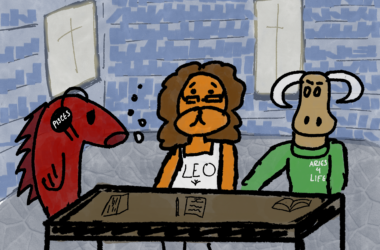Just two degrees north of the equator is a small island in South East Asia that is home to more than five million people and an infamous law forbidding chewing gum—Singapore is an unheralded paradise for foodies. I have traveled quite a lot in my life I’ve had some of the best hot dogs (pylsur) in Reykjavik, the spiciest Biryani in Dhaka, and the juiciest pork in San Antonio. However, no country has so completely blown me away with its variety, affordability, and quality as Singapore.
Singaporeans take their food very seriously. At the U.S. commercial service, where I did an internship, my local coworkers knew every single one of my eating habits after my first month. I have to admit, they knew more about what I ate than my own mother does. The most shocking thing for them was that I would not eat seafood. It might as well have been printed on my business card. I was often introduced at meetings as “Reid, our intern who doesn’t take seafood. So strange, la.” However, they were reassured by my willingness to try any part of a land animal, from brain to feet. One of the most commonly asked questions at the office was, “What did you have for dinner?” or “Where are we going for lunch?”
The amazing thing about Singaporean food is that you could have almost anything you wanted at any time of day. My favourite nights ended at a dim sum restaurant that specifically opened for the late night crowd. Hawker stalls are great during the day, as you can find a wide range of small appetizers that will satisfy your every craving. Hawker centres were originally formed by the Singaporean government, and they never leave you hungry. Competition amongst the stalls is intense; there is absolutely no room for mediocrity. Uncles and Aunties (Singaporeans’ affectionate term for their elders) pump out massive amounts of food for the swarms that invariably pour in for lunch and dinner.
Singaporean food is as diverse as its population. China has the strongest influence on it, but there are also influences from Malaysia and India. The dish that really made me drool was xiao long bao. These “small dragons” are little dumplings that have a small pocket of hot soup in them and are eaten with vinegar and ginger. Perfectly prepared ones have an extremely thin skin that is just thick enough so as not to break when picked up. Of course, the national dish, Haiinanese chicken rice, still makes my mouth water. The chicken is cooked in a delicious and well-seasoned broth, and can also be roasted for extra crispiness. The dish is then served with “oily” rice, chili sauce, and soy sauce to mix. My favourite lunchtime meal was curry bee hoon, a spicy curry-based soup with yellow noodles, tofu, and chicken. It doesn’t sound like much, but the combination has been the cause of many a Singaporean line-up.
As graduation fast approaches, one thing is definitely clear in my head: I really want to return to Singapore—to eat.








